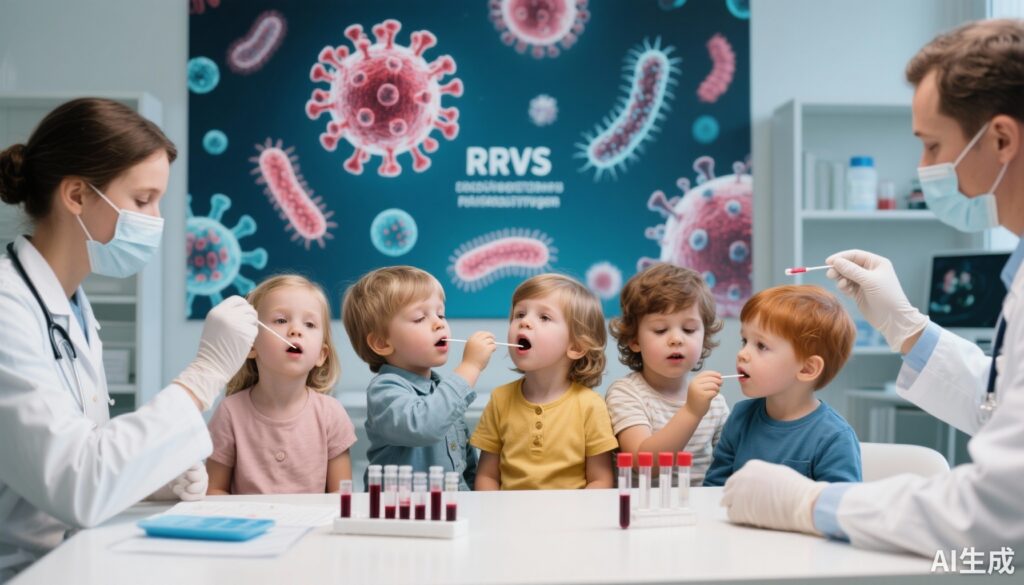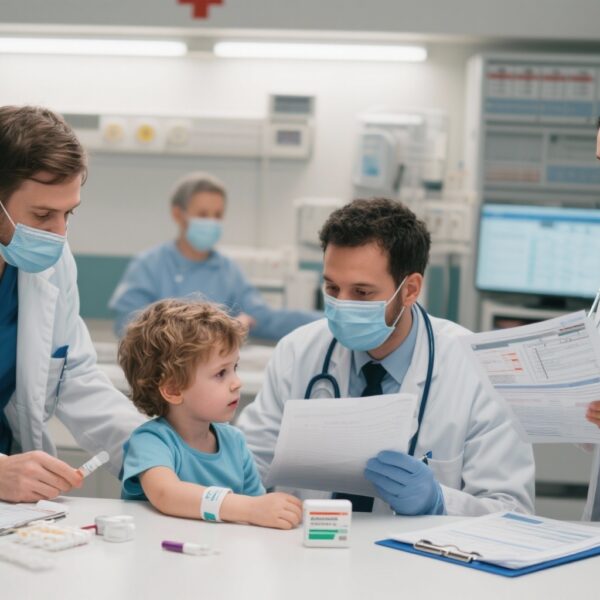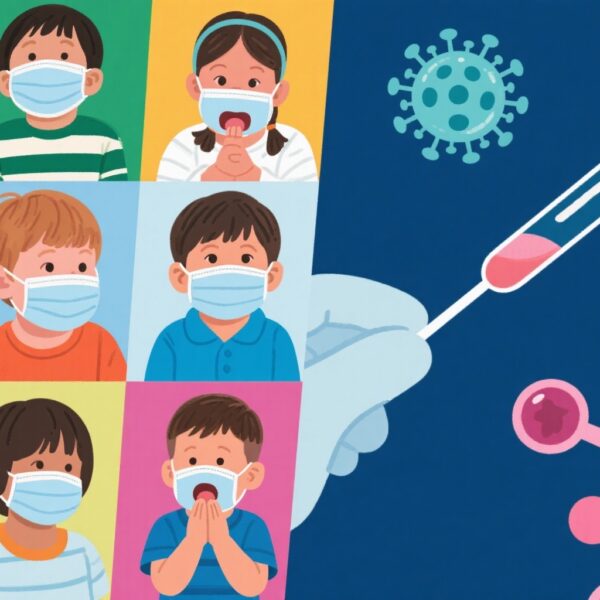Highlight
• Introduction of COVID-19 nonpharmaceutical interventions (NPIs) led to significant declines in respiratory pathogen circulation in young children.
• Children aged 3 to 4 years exhibited reduced serum antibodies to Streptococcus pyogenes and respiratory syncytial virus (RSV) post-NPIs, indicating delayed immunity acquisition.
• The antibody deficit was not observed in children under 3 years or for influenza viruses and SARS-CoV-2.
• This immunologic gap may provide a biological basis for the 2022-2023 rise in severe S pyogenes infections in European children.
Study Background
Streptococcus pyogenes, a significant bacterial pathogen, is implicated in a variety of invasive diseases in children ranging from pharyngitis to life-threatening conditions like necrotizing fasciitis and streptococcal toxic shock syndrome. In 2022 and 2023, several European countries reported an alarming upsurge in invasive S pyogenes infections among children, with no clear epidemiological explanation. Furthermore, common respiratory viruses such as RSV and influenza also influence pediatric morbidity, often predisposing to secondary bacterial infections.
The COVID-19 pandemic ushered in unprecedented public health measures worldwide, including nonpharmaceutical interventions (NPIs) like lockdowns, mask mandates, social distancing, and enhanced hygiene. These interventions substantially altered respiratory pathogen circulation patterns, often leading to decreased incidence during active NPI periods. However, their impact on the natural acquisition of immunity against bacterial and viral pathogens in early childhood remained uncertain.
Study Design
This cross-sectional multicenter study involved children aged 0 to 4 years who were recruited from hospitals across 10 European countries. The study population included both children presenting with suspected infections and afebrile controls.
Participants were enrolled during two timeframes: prior to the introduction of COVID-19 NPIs (September 2016 to March 2020) and following their implementation (April 2020 to July 2023). Throat swabs were collected for molecular detection of S pyogenes and common respiratory viruses, including RSV, influenza viruses (five strains), and four endemic coronaviruses, as well as SARS-CoV-2.
Serologic evaluation of total serum immunoglobulin G (IgG) targeted responses to S pyogenes cell wall extracts from two emm-type strains, and viral antigens from the aforementioned respiratory viruses. Quantitative immunoassays measured age-stratified antibody levels to explore the impact of NPIs on immunity acquisition.
Key Findings
A total of 1942 children aged 0 to 4 years underwent throat swabbing—1449 before NPIs and 493 after their introduction—with comparable median ages and sex distributions.
Molecular diagnostics demonstrated a marked decrease in detection rates of S pyogenes, RSV, common cold coronaviruses, and influenza viruses during the peak NPI period from March 2020 to July 2021. This reflects substantially reduced circulation of these pathogens in the early pandemic period due to NPIs.
Serological analyses provided critical insights into immunity acquisition. In children aged 3 to 4 years, total serum IgG to S pyogenes (emm1 strain) showed a significant reduction in those recruited after NPI introduction compared with the pre-NPI group (median relative units: after 0.13 vs before 0.35; P = .007). Similarly, RSV-specific IgG levels were significantly lower post-NPIs (median mesoscale units per 1000: after 49.6 vs before 141.8; P < .001).
No significant antibody differences were found in children aged 0 to 2 years, nor were there changes in IgG levels against individual influenza viruses or SARS-CoV-2, suggesting selective impact on immunity acquisition for certain pathogens and age groups.
The observed antibody reductions in the older age group suggest an immunologic delay equivalent to approximately one year of normal immunity development to these pathogens post COVID-19 restrictions.
Expert Commentary
This study furnishes compelling evidence linking COVID-19 NPIs to altered pathogen exposure and consequential delayed immunologic priming in young children, particularly for S pyogenes and RSV. The findings provide a plausible mechanistic explanation for the recent surge in severe invasive S pyogenes infections seen across Europe during 2022 to 2023.
While the study benefits from a robust multinational design, standardized molecular and serological assays, and well-stratified age analyses, its cross-sectional nature limits causal inference. Longitudinal studies following cohorts prospectively would be valuable to confirm these findings and to assess the kinetics of immune recovery as NPIs are relaxed.
Furthermore, the persistence of immunity gaps in S pyogenes calls for heightened clinical vigilance and may justify enhanced preventive strategies, such as surveillance and possibly early immunoprophylaxis, to mitigate disease risk in vulnerable pediatric populations.
Conclusion
The comprehensive seroepidemiological data presented demonstrate a significant reduction in naturally acquired immunity to Streptococcus pyogenes and RSV in children aged 3 to 4 years following COVID-19 nonpharmaceutical interventions. This immunity delay is approximately one year and likely underpins the recent increase in invasive S pyogenes infections in this age group. These insights underscore the unintended consequences that pandemic restrictions may have on immune system maturation in early childhood and highlight the need for careful monitoring and potential public health interventions to protect children as societies transition back to pre-pandemic respiratory pathogen circulation dynamics.
Funding and Trial Registration
The study was conducted by the PERFORM and DIAMONDS consortiums, supported by relevant European research funding streams (details as per original publication). No clinical trial registration is indicated, consistent with the cross-sectional observational design.
References
Dokal K, Channon-Wells S, Davis C, et al. Immunity to Streptococcus pyogenes and Common Respiratory Viruses at Age 0 to 4 Years After COVID-19 Restrictions. JAMA Netw Open. 2025;8(10):e2537808. doi:10.1001/jamanetworkopen.2025.37808.
Additional background references on S pyogenes infection epidemiology and respiratory virus immunology may be found in contemporary reviews and WHO reports on pediatric infections and immunity.



